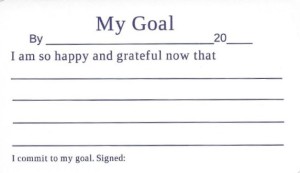3 Steps to Change a Paradigm
By Bob Proctor
No more effort or energy is required to aim high in life—to demand abundance and prosperity—than is required to accept misery and poverty. The difference between the two lies in your level of awareness.
The information I’m about to share with you is extremely powerful. It could set you free from the constraints that keep you from realizing your full potential and all of the good you desire.
However, you cannot be free until you know exactly what governs, shapes and directs your behavior, and ultimately, your results.
Everything I teach is based on the premise that your thoughts create your life. And, if you’re not careful, your thinking can be controlled by something called paradigms.
What are paradigms?
Paradigms are mental programs that have almost exclusive control over your habitual behavior. They are the “operating system” on which your mental processes run.
Your paradigms create the prism through which you view and make sense of the world around you. When information is presented to your mind, your mind runs through all of the things it already knows about that piece of information. It figures out where it fits in with the bigger picture, and decides if the information is good or bad, desirable or undesirable, possible or not.
Paradigms in and of themselves are neutral. If your paradigms are positive, you will have a happy, growth-oriented life, a healthy self-image, and the ability to adapt successfully to changes, upsets, and unforeseen events.
Conversely, negative paradigms can keep you stuck in old ways of thinking that can be very limiting. They keep you as imprisoned as do a cell and a set of iron bars. Maybe even more so, since they imprison you in the place where all true freedom resides: the mind.
Understanding precedes change
To achieve true freedom, you must understand how the mind works. Since no one knows what the mind looks like, we must use our imagination to come up with an image to work with.
So let’s take a look:
The mind is divided into two parts–-the conscious mind (or the thinking mind) and the subconscious mind (or the emotional mind). The subconscious mind is your power center—it functions in every cell of your body.
Your conscious mind has the ability to accept or reject any idea. No person or circumstance can cause you to think thoughts you do not choose.
The thoughts you choose eventually determine the results in your life. All pain, pleasure, or limitation is either originated in the conscious mind, or accepted from an outside source—the things you see, hear, smell, taste and touch. As you accept a thought, it is impressed upon the subconscious mind.
As you can see from the image, your mind is the larger part of your personality. The body is the instrument of your mind. So when your thoughts are impressed upon the subconscious mind, those thoughts are expressed through you (because the subconscious mind is everywhere in your body) as feelings and actions. Your actions determine your results.
How a paradigm is formed
Now that you understand how your mind works, it is important to realize that any thought you consciously or unconsciously impress upon the subconscious over and over becomes fixed there. Fixed ideas (or habits) will then continue to express themselves without any conscious assistance, until they are replaced.
But where do these ideas come from?
To a large degree, we inherit our paradigms through our genetic and environmental conditioning.
You were programmed, for example, by your parent’s and ancestors’ DNA, as well as many of their beliefs and habits—going back for generations.
When you were a child, everything that happened around you went right into your subconscious mind because you had no ability to reject anything. Any ideas that you were exposed to over and over again were like seeds being planted in fertile soil. They took root in your subconscious, and became part of the paradigms that control every aspect of your life.
We’re not taught about paradigms in school. So some 20, 30, 40, or 60 years later, we’re still living the same way we were programmed as little kids.
How to change paradigms…
and get new and different results
It follows, then, that if you want to create change in your life and start getting new and different results—you’ve got to change your paradigms.
How do you go about that?
Step One: Write down one thing – that goal, that dream, that challenge that you have not yet resolved in your life. The subconscious mind thrives on detail, so describe it to yourself as vividly as you can.
Step Two: Write down every association that you connect to this thing: everything you think about it, good and bad, everything that the thought of it brings to your mind.
One approach I have found extremely effective is to “map” it in much the same way writers come up with plot concepts.
Draw a circle around the words or sentence you came up with in Step One. Then, in the space around that circle, write down your associations as they come to you, encircling each one and connecting it with a line to the original encircled goal.
When you feel like you’ve come up with a substantial number of associations, take a good look at what your mind has shown you. You’re looking at your paradigms.
Step Three: It’s time to address your paradigms and ask “why?” I suggest that you zero in on a few of the most powerful paradigms, the ones that have the biggest negative impact.
Ask yourself, “Why do I think this? Where does it come from? Where did I get such an idea?” Keep on digging until you’ve exhausted every possible scenario.
And finally, now that you know what your paradigm is on any given topic, create an affirmation that will assist you in re-programming your mind, something that is the opposite of your paradigm.
For example, if your paradigm is you’ll never earn a lot of money, your affirmation might be:
I am so happy and grateful now that money comes to me on a continual basis through multiple sources. I am a magnet to money; I now have all that I want.
Write your affirmation on a 3X5 card and repeat it daily, as many times as possible. In time, you’ll begin to notice yourself thinking and acting in a different way. And, just when you think you’ve got it, it will be time to work on another paradigm!


